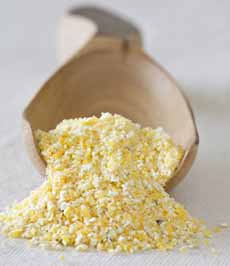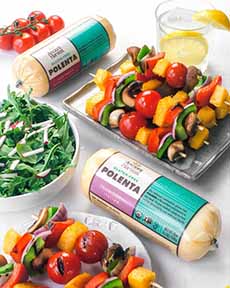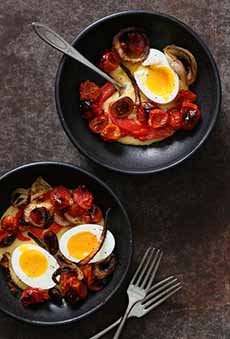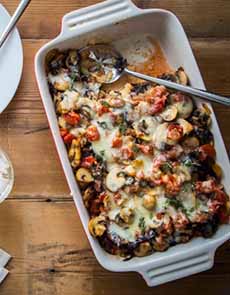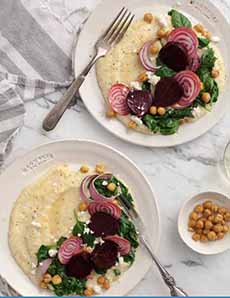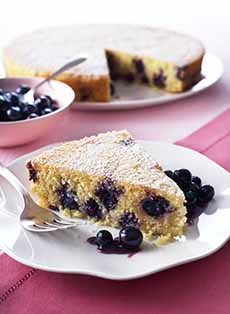TIP OF THE DAY: Ways To Serve Polenta (Gluten-Free Comfort Food)
|
Fall reminds us of polenta, a comfort food from Italy, served hot. (It’s comforting like mashed potatoes.) Polenta is cornmeal (photo #1) that is often boiled served as breakfast porridge (here’s the difference between grits and polenta). Its versatility allows it to be incorporated into mains and sides for lunch and dinner. You can also slice it and use it as a base for appetizers or hors d’oeuvre. That’s because when polenta cools, it solidifies into a loaf (photo #2) that can sliced and baked, fried, or grilled. Polenta—which is both the Italian word for cornmeal and a cooked dish made from it—has become familiar in America through Italian and Continental restaurants. But it’s not new to America. For the first two centuries on the continent, American diets contained much cornmeal: in bread, as breakfast porridge, as a side starch, and in other recipes. Paradoxically, corn, which is native to the Americas, was shipped to Europe, where Italians turned it into polenta. Back in the Americas, except for the Southern region, cornmeal was gradually replaced in American diets by refined wheat flour (note that milled polenta is not a whole grain). Polenta is naturally gluten-free (the only grains that do naturally contain gluten are barley, rye and wheat). Since so many other grains are processed in facilities that also handle these latter grains, however, some varieties of polenta may become contaminated with trace amounts of gluten. Some brands of polenta print “gluten-free” directly onto their product labels for easy identification. Others don’t. To be certain, check the label carefully for allergy information or a statement such as, “Produced in a facility that also handles wheat, rye or barley.” Such a statement doesn’t mean cross-contamination has occurred, but it does increase the likelihood. For most of history, polenta was grains of ground cornmeal that were stirred into boiling water until the grains plumped into a cooked cereal. But with the advance of milling methods, it became more efficient to process the cornmeal. While corn itself is a whole grain, polenta is refined: It is degerminated cornmeal, which has the germ and endosperm—(which contain the fiber and other nutrition—removed. As with all refined grains, including white rice, the majority of the grains we consume have left their protein, iron and vitamins on the factory floor. You can make polenta from scratch, or buy it in rolls, available in most supermarkets (photo #2). The latter makes it easy to create stacked appetizers and sides. It’s available in plain plus flavors such as basil-garlic and sundried tomato. The only limit is your creativity. In addition to breakfast polenta—both as porridge and fried and served with eggs, we regularly serve it: POLENTA RECIPES |
|
|
|
CHECK OUT WHAT’S HAPPENING ON OUR HOME PAGE, THENIBBLE.COM.
|
||
